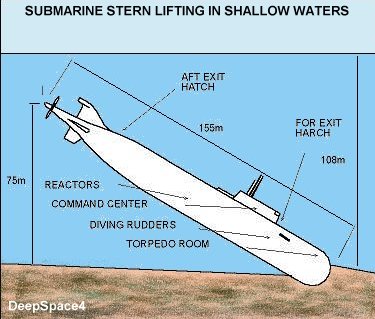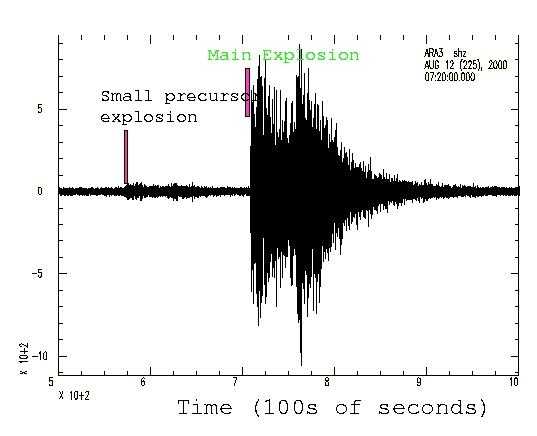
|

|
The Dossier of the Kursk Murderer Foreign Affairs News Keywords: RUSSIA, KURSK Source: Russia Today Published: August 21, 2000 Posted on 08/21/2000 20:59:43 PDT by Sawdring
Summary On Saturday night, commanders of the Russian Navy confirmed officially that there is not anyone alive on board of Kursk submarine, that sank to the bottom of the Barents Sea a week before. In fact, they have known this since Wednesday – Segodnya wrote, - but have feared to admit this. One of the possible versions of the shipwreck is as follows. On the night of August 12, according to the plan of military exercise, Kursk was to carry out a night torpedo attack on a training military target from the periscope depth. At the depth of 25 meters, when the submarine was going up, it hit a large underwater object, which was moving at much higher speed at the same depth or a little higher. The moving object has been identified as "foreign nuclear multi-purpose submarine". The two submarines were aware about the presence of each other, but could have had problems with hydro-acoustic signals at that very moment, because they were both near the surface of water. According to the preliminary observations, the two submarines collided at the angle of 20 to 30 degrees. The dynamic blow was the equivalent of a 100 to 150 kilogram trotil explosion and was registered by Norwegian seismologists. The blow hit a place on Kursk where its two largest modules were connected – the first torpedo module and the second command module. The combat alarm was sounded at Kursk before the explosion and the crew was at its posts, according to combat schedules. This means that around forty crew members who were in the first and in the second modules died immediately. In the meantime, the killer submarine continued its destruction of Kursk. Moving very tightly to Kursk, it must have opened its light shell up to the sixth module, and the strong shell – up to the fourth module. It operated like a can opener with its right horizontal stabilizer on the side of Kursk. The situation at Kursk was desperate, as the water flooded the first module in no time, drowning the power supply. The submarine became de-energized and its nuclear engine was turned off by its protection system. The submarine started to fall on the sea bottom at a 45 degree trim by the bow. The killer-submarine must have had large injuries as well. There could be parts of its light shell on board the Kursk and on the sea bottom. Still, its energy system continued to operate, and this enabled the crew to liquidate the leak and to move away from the catastrophe zone, hiding in the hydro-acoustic shades of Russian ships. |